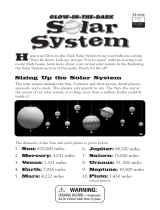
Explore Scientific Filter 1.25" Dark Yellow No.15 – part No. 0310266
Watching the Moon surface through the filter, the contrasts will enormously increase. Same with planet
Mars. On the huge planet Jupiter, when using the filter, you can even see the contrasts between the
cloud-bands and a lot more details. Starting with a telescope diameter of 8“ and a clear sight, you
even get to see various details of Saturn. Minimum 5” aperture recommended.
Explore Scientific Filter 1.25" Yellow-Green No.11 – part No. 0310269
Watching the Moon surface through the filter, the contrasts will enormously increase. Same with planet
Mars. On the huge planet Jupiter, when using the filter, you can even see the contrasts between the
cloud-bands and a lot more details. Starting with a telescope diameter of 8“ and a clear sight, you
even get to see various details of Saturn.
Explore Scientific Filter 1.25" Green No.56 – part No. 0310262
The green filter is to increase the contrasts enormously between the red and the blue regions of the
cloud structures on the gas planets Jupiter and Saturn. Seeing our Earth Moon through the green
filter, the contrasts of each ray crater become clearly more visible.
Explore Scientific Filter 1.25" / 2” Dark Green No.58A – part No. 0310261 / 0310275
The green filter is to increase the contrasts enormously between the red and the blue regions of the
cloud structures on the gas planets Jupiter and Saturn. Seeing our Earth Moon through the green
filter, the contrasts of each ray crater become clearly more visible. This filter should be used at an
aperture of 8“.
Explore Scientific Filter 1.25" Light Blue No.82A – part No. 0310265
The color of light blue really supports watching the high clouds on Mars. The contrast increases. The
dark red structures will be shown even darker, so this is the perfect filter for watching the big red
Flecks on the gas planet Jupiter. The rings of Saturn will be accentuated, the structures of the Venus
Atmosphere will be even finer.
Explore Scientific Filter 1.25" / 2” Blue No.80A – part No. 0310264 / 0310276
The color of light blue really supports watching the high clouds on Mars. The contrast increases. The
dark red structures will be shown even darker, so this is the perfect filter for watching the big red
Flecks on the gas planet Jupiter. The rings of Saturn will be accentuated, the structures of the Venus
Atmosphere will be even finer.
Explore Scientific Filter 1.25" Dark Blue No.38A – part No. 0310263
The color of light blue really supports watching the high clouds on Mars. The contrast increases. The
dark red structures will be shown even darker, so this is the perfect filter for watching the big red
Flecks on the gas planet Jupiter. The rings of Saturn will be accentuated, the structures of the Venus
Atmosphere will be even finer. Works well starting with a 10“ aperture.
Explore Scientific Filter 1.25" Violet No.47 – part No. 0310272
The purple filter is perfect for watching Venus. Seeing through it, the dark clouds of the Venus
atmosphere become even better visible. He also clears up the structures of the rings around Saturn.
Using big openings and having a clear sight this filter is also good for watching Merkur.



